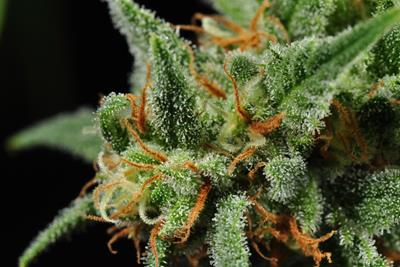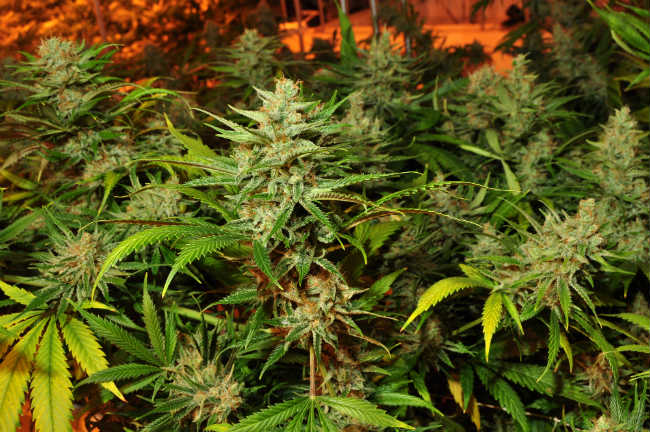
Tuesday January 18, 2022
By Trevor Ross
 Growing
Growing
There are many different ways to grow cannabis, from indoor to outdoor, from greenhouses to space buckets. But regardless of what path you choose, there are some essential tools and items you can expect to use along the way.
In this article, we review the essential marijuana growing supplies, as well as decisions growers can expect to make as they build their first (or next) setup.
Grow Room/Area
Before a single seed is planted, the growing environment must be determined, and prepared if necessary. Many states implement laws requiring grow operations to be out of public sight or even secured under lock and key, so consult your local laws to help determine where you will grow.
A good indoor grow area should be clean, ideally even possible to sanitize. Grow tents are great options for indoor growers because they offer mostly self-contained environments that are easier to clean than whole rooms with a couple plant in the corner.

Consider access to electricity for lights, and at least a window with a box fan for ventilation. Remember that you will be examining your plants from every angle, so account for room to work as well.
Outdoor growers are liberated from many of these constraints, but will need to assess their climate for potential weather risks, and position plants for maximum sunlight (remember the path of the sun will move over ten weeks!).
Grow Lights
Any indoor grow operation will require a dedicated light, and growers have several options to choose from. Your choice of light will be determined by some unique factors like electrical consumption, efficiency relative to the size of your grow, and light color.
Grow Light Options
High Intensity Discharge Bulbs (HIDs): For a time, HIDs were the standard in professional grow ops. Their bright, penetrating light can produce some stunning colas, and heat a large area. But on a smaller scale they can quickly overheat a space. They also require some assembly because they are often sold without the ballast necessary to regular power, and they require two different kinds of bulbs—metal halide and high-pressure sodium--for the vegetative and flowering stages respectively.
LEDs (Light Emitting Diodes): LEDs are most popular among home growers because of their convenience, and costs have also fallen in recent years. LEDs burn cooler than high-intensity bulbs and come equipped with a full spectrum of light for vegetative or flowering phase, changed with the flip of a switch.
Fluorescent Bulbs: Fluorescent lights including CFL bulbs and T5 lighting offer a full spectrum of light, but do not achieve very deep penetration, making them a weaker option for growing cannabis. However, this gentle light does make them a viable, low-cost option for seedlings and clones.
Grow Medium
Grow mediums are primarily divided between soil and hydroponic systems. Soil is usually better for beginners because it requires less maintenance and has a more forgiving margin of error. Hydroponic systems require more equipment, and while they can be regulated with automated timers and switches, the pH and nutrient levels can change much faster than in soil, and demand more attention to detail.
Even in hydroponic systems, the plants are usually suspended in a net cup with a more solid medium to carry them when they are young, and to nourish the root ball.
Grow Medium Options
Soil: Soil is not mere dirt, but rather a living environment full of beneficial microorganisms, fungi, and nutrient-rich organic matter decomposed into fluffy humus. Loose, living soil has excellent aeration, water retention, and can retain viable nutrients for weeks. Soil also has a more stable pH than water-based mediums.
Rockwool: Rockwool is made by spinning melted volcanic rock into a cotton candy-like fluff then shaping it into its final form which is often a small cube. You will rarely see a whole cannabis plant grown in a pot of rockwool, but it’s great for seedlings or net pots in hydro systems. Be advised that it does come with a naturally high pH, requiring treatment in a solution of about 5.5 pH. These spongey little cubes can even be cleaned and reused.
Coconut Coir: Coco coir is another hydroponic medium made from the fibrous husk of the coconut. Coir has excellent aeration and water retention that make it a practical choice for hydroponic nets, but it can also be mixed into soil to improve hydration.
It should be noted that coconut coir often comes infused with Trichoderma, a fungus intended to aid plants’ roots and defend against pathogens. And they do! But they may also compete with other fungi including mycorrhizae, which aid nutrient uptake.
Nutrients
Nutrients include any fertilizer, plant food, or bloom booster used to keep the plant healthy or optimize growth. Specialized nutrients can be purchased online or in some head shops, while more generic nutrients can be found in any garden store.

The primary nutrients, or macronutrients, in any fertilizer are nitrogen (N), phosphorus (P), and potassium (K), presented on most labels as an N-P-K ratio (i.e. 2-6-4). Cannabis consumes larger amounts of nitrogen in the vegetative stage, then more phosphorus in the flowering stage.
Throughout the plan’s life, it will also require an array of micronutrients including calcium, iron, and manganese. These minerals keep the plant healthy, fortifying it against disease.
Ventilation
Any cannabis plant will benefit from ventilation, even if it’s only a small fan clipped to the rim of the pot. Comprehensive ventilation systems serve to oxygenate the plant, regulate temperature, and sometimes deter pests and minimize odor. Growers using tents indoor should strive for this kind of circulation, but failing that, an oscillating fan is better than nothing. Even a simple fan will keep air moving around your plants and deter many flying insects from getting too comfortable.
When using fans that blow directly onto the plant, be sure to move them every couple days to prevent wind burn, which can curl and permanently distort leaves.
Cannabis Seeds or Clones
Once the space has been blocked out and the equipment procured, all that’s left to begin is a source of cannabis itself, either from seed or a clone.
Cannabis seeds can be purchased online, and are usually offered, regardless of strain, as either autoflowering or feminized photoperiod seeds. A photoperiod plant is a standard plant with a life cycle determined by the sun. These plants grow vegetation during bright summer light, and switch to flowering under amber, autumnal light.
The seeds are bred to be female because only female cannabis plants produce the flowers where trichomes develop. Male cannabis plants only produce pollen, and pollinated female plants produce fewer flowers and more seeds.

Conversely, the life cycle of an autoflowering plant is determined by time, not light. So regardless of what color light shines over an autoflowering plant, they will switch from veg to flowering after a genetically determined amount of time.
Autoflower yields are often lower than optimized photoperiod yields, but the convenience is tremendous for novice growers or those growing in small spaces, as auto flowering plants are almost always smaller.
Clones are the larger cuttings of cannabis plants, usually the lower branches, which are then planted and nurtured to grow into another full plant—and a genetic copy of its source. Clones can be bought online, but cannot be mailed across state lines while national prohibition remains intact, so finding one is more difficult. But once you have your own plants, clones can be harvested at a regular pace.
Additional Cultivation Supplies
Most growers can only benefit from tracking environmental data with thermometers, hydrometers to measure humidity, and pH meters, particularly in hydroponic systems where water pH can change more quickly.
Growers in any medium will also use pruning shears to trim excess bulk, but those growing in soil should prepare to work the dirt with trowels and gardening forks.
Are there any must-have cannabis growing supplies we missed? Let us know in the comments below!







